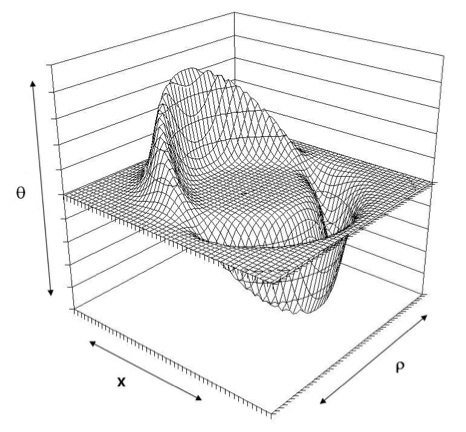Tunings, part 4
When creating a new tuning prior to the Keith tuners, tunings were created based on various criteria: grouped intervalic pitch classes, a specific project, harmonic atmosphere, varying colors, etc. I may or may not have applied rules to tunings; for example, no adjacent or parallel intervals. There were tunings on which I worked for weeks. Others were worked out faster, but they were all conceivable within a known harmonic universe.
The tuning of one course impacts the two courses adjacent to it. And further impacts the entire tuning; changing the tuning of one course usually requires a complete overhaul of that entire tuning. However, once the tuning is determined and complete, nothing changes within it.
The Keith tuners change all that.
 |
| Changing the tuning of a course is akin to this illustration: as intervals functioning as the warp (interval) field increases, so do the intervals functioning as the gravity (diapason) field. |
With the Keith tuners, and their options of two pitches per string, a single specific tuning now contains multiple tunings within itself. For example, on the 24-string Double Subcontraguitar with four Keith tuners, I can achieve eight tunings at once.
I'm currently working on creating new tunings and harmonic environments for the 24. The consideration and understanding of tunings on this instrument now feels like something very much in three dimensions. The two pitches assigned to the Keith tuner strings greatly impact the entire tuning. Changing pitches on those strings has a deep impact on the adjacent courses, and exerts a harmonic gravitational pull on the overall tuning.
 |
| Here, the red connections represent the changing intervalic relationships of the Keith'ed courses. |
Using a Keith tuner to change the tuning on a specific course impacts the meaning, gravity, and harmonic pull of the adjacent courses. This takes on mathematical proportions because on each neck of the 24, there are currently two Keith tuners. Changing the tuning on both Keith'ed courses radically alters the overall tuning, and actually creates a new tuning and an altered harmonic environment.
 |
| In this illustration, the numbers represent intervals and the intervallic relationships within a tuning scenario. |
It's proving to be quite a steep learning curve for creating new tunings for the 24. Difficult, but an exciting challenge, as the Keith tuners are like a gateway to the previously unknown in terms of shifting harmonic environments.
More to come.
-kk



Comments
Post a Comment